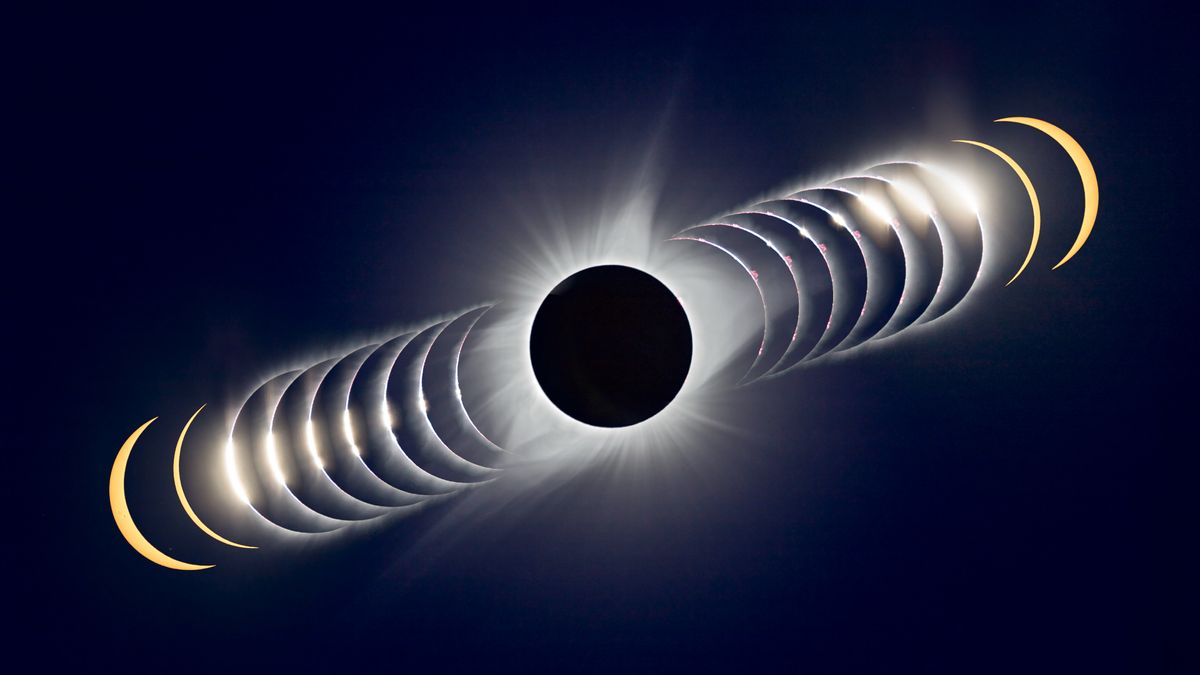
The first is a partial eclipse of the most common and the least impressive because the moon merely blocks out part of the sun sending a shadow — the penumbra — across a swathe of Earth.The second is an annular solar eclipse, where the moon blocks out the center of the sun, but leaves a circle of light from the sun visible from within a shadow called the antumbra.
However, there is an intriguing fourth type of solar eclipse — a hybrid solar eclipse — that occurs only a few times per century.As luck would have it, the next solar eclipse to occur on Earth will be a hybrid solar eclipse.
Here's everything you need to know about the coming hybrid solar eclipse — the rarest, most intriguing, and arguably the most globally spectacular and interesting type of solar eclipse there is. .
A hybrid solar eclipse combines an annular and a total solar eclipse where the former becomes the latter and then usually reverts back.It's therefore impossible to experience both an annular and a total solar eclipse during a hybrid event — you have to make a choice. .
Hybrid solar eclipses occur when the moon's distance is near its limit for the umbral shadow to reach Earth and because Earth is curved (opens in new tab).The moon is just at the right distance from Earth for the apex of its cone-shaped shadow to be slightly above the Earth's surface at the beginning and end of the eclipse path, causing the moon's antumbral shadow to move across Earth causing an annular solar eclipse.
This diagram of a hybrid solar eclipse shows how the moon's distance from the Earth determines the shadow projected onto the Earth's surface, from the faint penumbra of a partial solar eclipse to the deep, dark umbra of totality and the antumbra — a kind of half-shadow — of annularity.The next hybrid solar eclipse will occur on April 20, 2023 in the southern hemisphere.There are between two and five solar eclipses each year, though during the 21st century just 3.1% (opens in new tab) (7 out of 224) of solar eclipses are hybrid solar eclipses.Between 2000 BCE to 3000 CE just 4.8% (opens in new tab) of solar eclipses are hybrid events. .
The last hybrid solar eclipse to occur was on November 3, 2013.Because the moon appears to pass directly in front of the sun, hybrid solar eclipses are classified as "central" solar eclipses — as are total and annular solar eclipses — to differentiate them from partial solar eclipses.Explore the different types of solar eclipses in more detail with this informative NASA article (opens in new tab).Texas State University (opens in new tab) has a useful list of several videos explaining the different types of eclipses.
Five Millenium catalog of hybrid solar eclipses